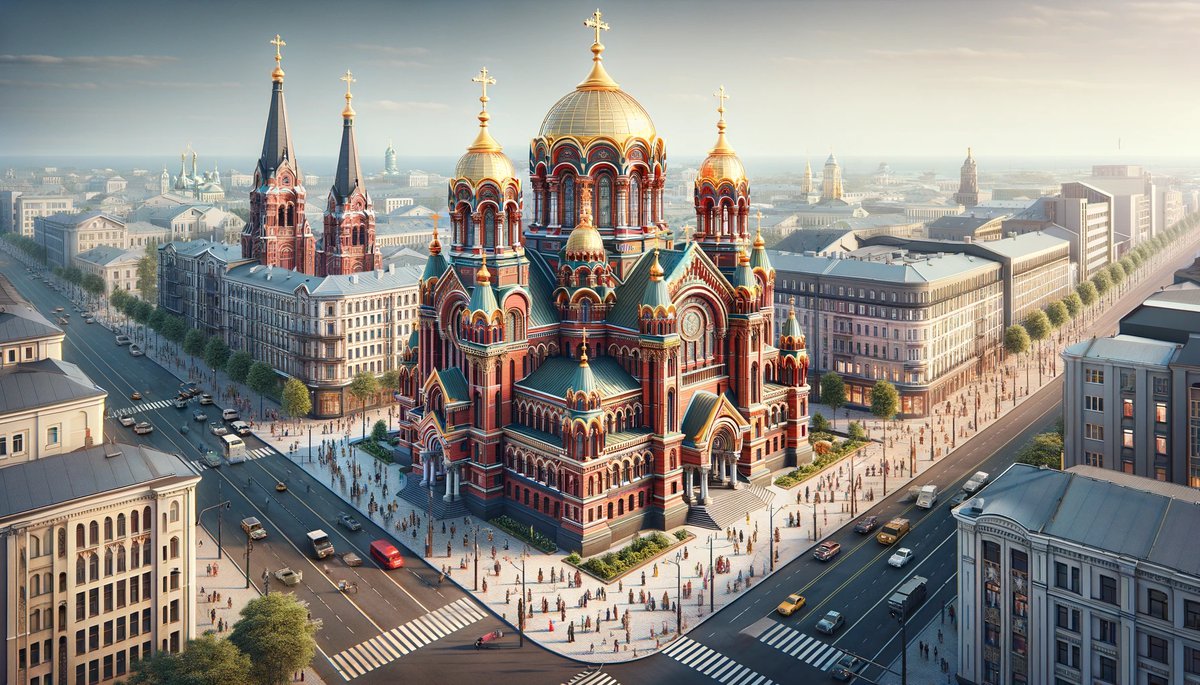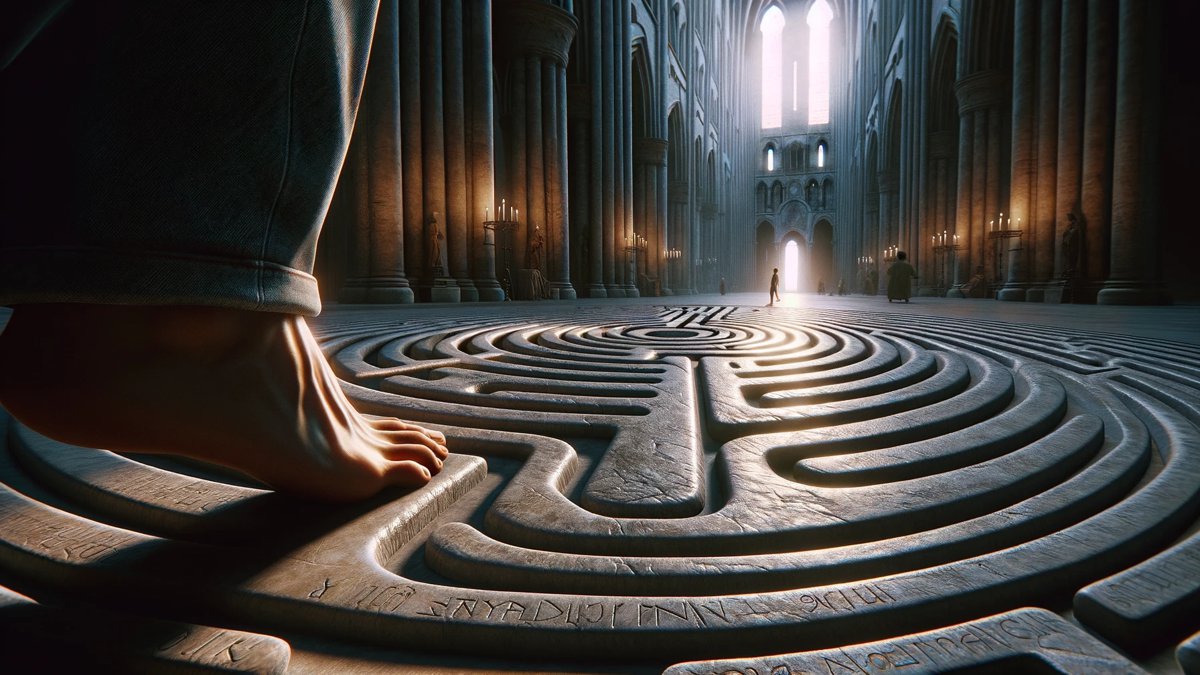Home>Arts and Culture>Where Is The Chartres Cathedral


Arts and Culture
Where Is The Chartres Cathedral
Published: February 16, 2024
Jason DeRose, Managing Editor at Christian.net, uses his expertise in religion and journalism to deepen understanding of faith's societal impacts. His editorial leadership, coupled with a strong academic background, enriches the platform’s diverse content, earning him recognition in both journalism and religious circles.
Discover the rich history and stunning architecture of the Chartres Cathedral, a must-see destination for arts and culture enthusiasts. Uncover the secrets of this iconic landmark and plan your visit today.
(Many of the links in this article redirect to a specific reviewed product. Your purchase of these products through affiliate links helps to generate commission for Christian.net, at no extra cost. Learn more)
Table of Contents
Introduction
The Chartres Cathedral, also known as the Cathedral of Our Lady of Chartres, is a masterpiece of Gothic architecture nestled in the charming town of Chartres, France. This architectural marvel has captivated the hearts and minds of visitors for centuries, drawing pilgrims, historians, and art enthusiasts from around the world. Its awe-inspiring beauty and rich history make it a symbol of spiritual devotion and human achievement.
As you approach the cathedral, its imposing facade rises majestically against the sky, adorned with intricate sculptures and stunning stained glass windows. The sheer grandeur of the structure is enough to leave any visitor in awe, evoking a sense of reverence and wonder.
The Chartres Cathedral stands as a testament to the ingenuity and craftsmanship of the medieval artisans who dedicated their lives to its construction. Its soaring spires and delicate flying buttresses are a testament to the architectural prowess of the time, showcasing the innovative techniques that defined the Gothic style.
Beyond its architectural significance, the cathedral holds a profound spiritual and cultural importance. For centuries, it has been a site of pilgrimage, drawing devout worshippers and curious travelers seeking solace and inspiration within its hallowed walls. The cathedral's sacred relics and religious artifacts add to its allure, creating an atmosphere steeped in history and faith.
Moreover, the Chartres Cathedral serves as a living museum of medieval art and craftsmanship. Its interior is adorned with a wealth of intricate sculptures, ornate carvings, and breathtaking stained glass windows, each telling a story of religious devotion and artistic expression. The interplay of light and color through the stained glass creates a mesmerizing spectacle, casting a kaleidoscope of hues across the interior and infusing the space with an ethereal glow.
In the following sections, we will delve deeper into the history, architecture, art, and significance of the Chartres Cathedral, unraveling the layers of its timeless allure and shedding light on the enduring legacy of this architectural gem. Whether you are a history buff, an art aficionado, or a curious traveler, the Chartres Cathedral promises a journey through time and spirituality, inviting you to explore its mysteries and marvel at its splendor.
Read more: Why Was The Chartres Cathedral Built
History of the Chartres Cathedral
The history of the Chartres Cathedral is a tapestry woven with threads of faith, resilience, and architectural ingenuity. The roots of this iconic structure can be traced back to ancient times, with the site holding religious significance long before the construction of the current cathedral. Legend has it that the location was once home to a Druidic sanctuary, a place of spiritual reverence that predates the arrival of Christianity in the region.
The earliest iteration of the Chartres Cathedral was built in the 4th century, dedicated to Saint Lubin, the Bishop of Chartres. However, this early structure was ravaged by fire in 1020, paving the way for the ambitious undertaking of erecting a grand cathedral that would stand as a testament to the glory of God and the devotion of the faithful.
The construction of the present-day cathedral commenced around 1134, and over the following decades, it underwent several phases of expansion and enhancement. The cathedral's evolution mirrors the transition from Romanesque to Gothic architecture, with each phase reflecting the prevailing artistic and architectural trends of the time.
One of the most remarkable aspects of the cathedral's history is its resilience in the face of adversity. Despite enduring multiple fires and the ravages of war, the Chartres Cathedral emerged unscathed, a testament to the unwavering determination of the builders and the enduring spirit of the community.
The cathedral's significance as a place of pilgrimage further solidified its place in history. Pilgrims from far and wide flocked to Chartres, drawn by the allure of the cathedral's sacred relics, including the revered Sancta Camisa, believed to be the tunic worn by the Virgin Mary at the time of Christ's birth. This influx of pilgrims not only enriched the spiritual fabric of the cathedral but also contributed to the flourishing economy of the town.
Throughout the centuries, the Chartres Cathedral has stood as a beacon of faith and a testament to human creativity. Its history is a testament to the enduring power of art and architecture to transcend time and inspire generations. Today, the cathedral continues to stand proudly, inviting visitors to immerse themselves in its rich history and experience the profound legacy of this architectural marvel.
Architecture of the Chartres Cathedral
The architecture of the Chartres Cathedral stands as a testament to the ingenuity and artistry of the medieval builders who brought this awe-inspiring structure to life. As one of the finest examples of French High Gothic architecture, the cathedral's design embodies the principles of verticality, light, and divine transcendence, creating a space that elevates the spirit and captivates the imagination.
The cathedral's exterior is a symphony of stone, adorned with delicate tracery, elegant flying buttresses, and imposing spires that reach towards the heavens. The intricate carvings that adorn the portals and facades depict a rich tapestry of biblical narratives, saints, and symbolic motifs, inviting visitors to embark on a visual journey through the stories of faith and salvation.
Upon entering the cathedral, visitors are greeted by a breathtaking display of light and color, courtesy of the magnificent stained glass windows that adorn the nave and choir. These windows, dating from the 12th and 13th centuries, are renowned for their vibrant hues and intricate designs, depicting scenes from the Old and New Testaments with a luminous beauty that seems to transcend earthly limitations.
The interior architecture of the cathedral is characterized by soaring vaults, slender columns, and a sense of ethereal spaciousness that inspires awe and reverence. The innovative use of ribbed vaults and pointed arches not only lends structural stability but also creates a sense of upward movement, drawing the gaze heavenward and evoking a profound sense of spiritual elevation.
One of the most striking features of the Chartres Cathedral is its labyrinth, a remarkable architectural element located in the nave. This labyrinth, intricately carved into the floor, serves as a symbolic path of pilgrimage and meditation, inviting visitors to embark on a spiritual journey as they trace its intricate pattern, contemplating the mysteries of faith and existence.
The cathedral's architecture is a harmonious blend of form and function, where every element serves a purpose beyond mere aesthetics. From the intricate ribbing of the vaults to the delicate tracery of the rose windows, every detail is a testament to the skill and vision of the master craftsmen who dedicated themselves to the creation of this sacred space.
In essence, the architecture of the Chartres Cathedral transcends the boundaries of time and culture, speaking to the universal human aspiration for beauty, transcendence, and spiritual fulfillment. It stands as a living testament to the enduring power of architecture to uplift the soul and inspire wonder, inviting visitors to immerse themselves in its timeless grandeur and experience the profound legacy of this architectural masterpiece.
Art and Sculpture at the Chartres Cathedral
The Chartres Cathedral is a treasure trove of medieval art and sculpture, offering a captivating glimpse into the artistic achievements of the era. From the moment visitors set foot inside the cathedral, they are enveloped in a world of intricate carvings, masterful sculptures, and resplendent stained glass, each element contributing to the rich tapestry of visual storytelling that defines the cathedral's interior.
The west facade of the cathedral serves as a grand canvas for a myriad of sculpted figures, each bearing testament to the skill and artistry of the craftsmen who brought them to life. The intricate portals are adorned with scenes from the Last Judgment, the lives of saints, and biblical narratives, inviting visitors to embark on a visual journey through the stories of faith and salvation. The sculptures, with their expressive forms and intricate detailing, serve as a testament to the enduring power of art to convey profound narratives and evoke emotional resonance.
The interior of the cathedral is adorned with a wealth of sculptures, each bearing the mark of master craftsmen who dedicated themselves to the creation of these timeless works of art. The choir screen, in particular, is a marvel of medieval sculpture, featuring a rich array of figures depicting prophets, apostles, and scenes from the life of Christ. The delicate tracery and expressive forms of these sculptures create a sense of dynamic movement, infusing the space with a palpable sense of spiritual energy and narrative depth.
The stained glass windows of the Chartres Cathedral are a crowning achievement of medieval art, renowned for their vibrant colors and intricate designs. Dating from the 12th and 13th centuries, these windows depict a rich array of biblical scenes, saints, and symbolic motifs, casting a luminous glow across the interior and infusing the space with an ethereal beauty that transcends earthly limitations. The interplay of light and color through the stained glass creates a mesmerizing spectacle, inviting visitors to bask in the radiant hues and contemplate the divine narratives they convey.
In essence, the art and sculpture of the Chartres Cathedral serve as a testament to the enduring legacy of medieval craftsmanship and artistic vision. Each sculpture, each stained glass window, is a testament to the profound intertwining of faith, art, and human creativity, inviting visitors to immerse themselves in a world of visual splendor and spiritual contemplation. The cathedral stands as a living museum of medieval art, a testament to the enduring power of artistic expression to transcend time and inspire wonder, inviting visitors to experience the profound legacy of this architectural masterpiece.
Importance of the Chartres Cathedral
The Chartres Cathedral holds profound significance as a cultural, spiritual, and architectural landmark, transcending its physical presence to embody a timeless symbol of human creativity and devotion. Its importance resonates on multiple levels, each contributing to its enduring legacy and universal appeal.
At its core, the cathedral stands as a testament to the unwavering faith and spiritual devotion of the medieval community that envisioned and brought it to fruition. As a place of pilgrimage, the cathedral drew devout worshippers from far and wide, fostering a sense of unity and shared spiritual experience that transcended geographical and cultural boundaries. Its sacred relics, including the revered Sancta Camisa, became objects of veneration, drawing pilgrims seeking solace, healing, and divine connection.
Architecturally, the Chartres Cathedral represents a pinnacle of Gothic design, embodying the innovative structural and aesthetic principles that defined the era. Its soaring spires, delicate flying buttresses, and intricate tracery stand as a testament to the ingenuity and craftsmanship of the medieval builders, showcasing their mastery of stone and light. The cathedral's architectural significance extends beyond its historical context, serving as a source of inspiration for architects, artists, and scholars across the centuries.
Furthermore, the cathedral's cultural importance is underscored by its role as a custodian of medieval art and craftsmanship. Its interior is adorned with a wealth of intricate sculptures, ornate carvings, and breathtaking stained glass windows, each serving as a testament to the artistic vision and technical skill of the craftsmen who brought them to life. The interplay of light and color through the stained glass creates a mesmerizing spectacle, casting a kaleidoscope of hues across the interior and infusing the space with an ethereal glow.
Beyond its historical, architectural, and artistic significance, the Chartres Cathedral holds a place in the hearts of visitors as a site of wonder, contemplation, and spiritual renewal. Its enduring allure lies in its ability to transcend time and speak to the universal human longing for beauty, transcendence, and connection. Whether viewed as a cultural treasure, a spiritual sanctuary, or a marvel of architectural achievement, the cathedral's importance resonates with all who encounter its timeless splendor.
In essence, the Chartres Cathedral's importance transcends the boundaries of time and culture, embodying the collective aspirations and creative spirit of humanity. It stands as a living testament to the enduring power of art, faith, and human ingenuity, inviting visitors to immerse themselves in its timeless grandeur and experience the profound legacy of this architectural masterpiece.
Read more: How Was Chartres Cathedral Built
Visiting the Chartres Cathedral
Visiting the Chartres Cathedral is an immersive journey into the heart of medieval art, architecture, and spirituality. As you approach the cathedral, its imposing facade rises majestically against the sky, adorned with intricate sculptures and stunning stained glass windows. The sheer grandeur of the structure is enough to leave any visitor in awe, evoking a sense of reverence and wonder.
Upon entering the cathedral, you are greeted by a breathtaking display of light and color, courtesy of the magnificent stained glass windows that adorn the nave and choir. These windows, dating from the 12th and 13th centuries, are renowned for their vibrant hues and intricate designs, depicting scenes from the Old and New Testaments with a luminous beauty that seems to transcend earthly limitations.
The interior architecture of the cathedral is characterized by soaring vaults, slender columns, and a sense of ethereal spaciousness that inspires awe and reverence. The innovative use of ribbed vaults and pointed arches not only lends structural stability but also creates a sense of upward movement, drawing the gaze heavenward and evoking a profound sense of spiritual elevation.
As you explore the cathedral, take the time to admire the wealth of intricate sculptures and ornate carvings that adorn its interior. The west facade of the cathedral serves as a grand canvas for a myriad of sculpted figures, each bearing testament to the skill and artistry of the craftsmen who brought them to life. The sculptures, with their expressive forms and intricate detailing, serve as a testament to the enduring power of art to convey profound narratives and evoke emotional resonance.
One of the most striking features of the Chartres Cathedral is its labyrinth, a remarkable architectural element located in the nave. This labyrinth, intricately carved into the floor, serves as a symbolic path of pilgrimage and meditation, inviting visitors to embark on a spiritual journey as they trace its intricate pattern, contemplating the mysteries of faith and existence.
In essence, visiting the Chartres Cathedral is a transformative experience, inviting you to immerse yourself in a world of visual splendor, spiritual contemplation, and architectural grandeur. Whether you are a history buff, an art aficionado, or a curious traveler, the cathedral promises a journey through time and spirituality, inviting you to explore its mysteries and marvel at its splendor.














